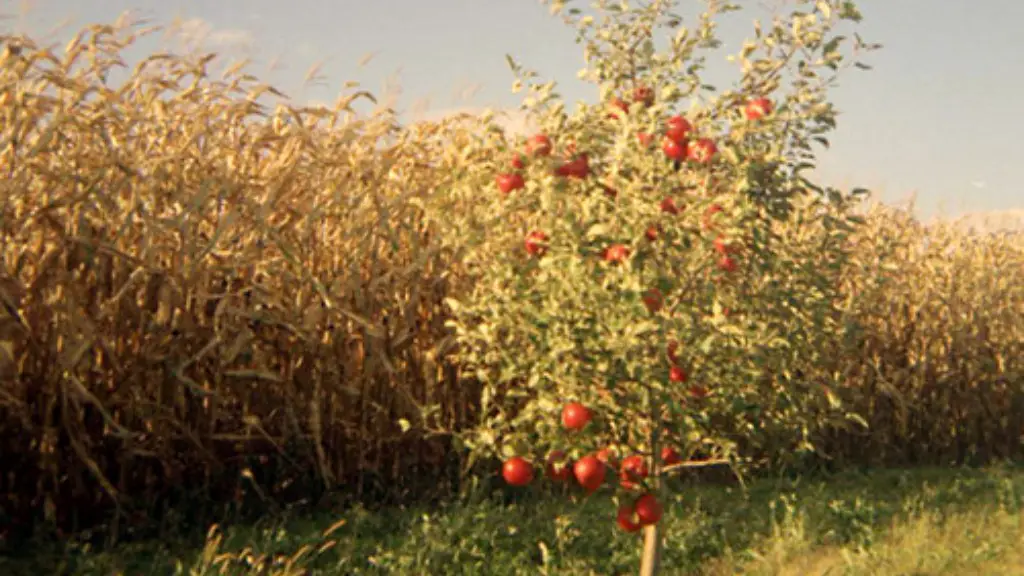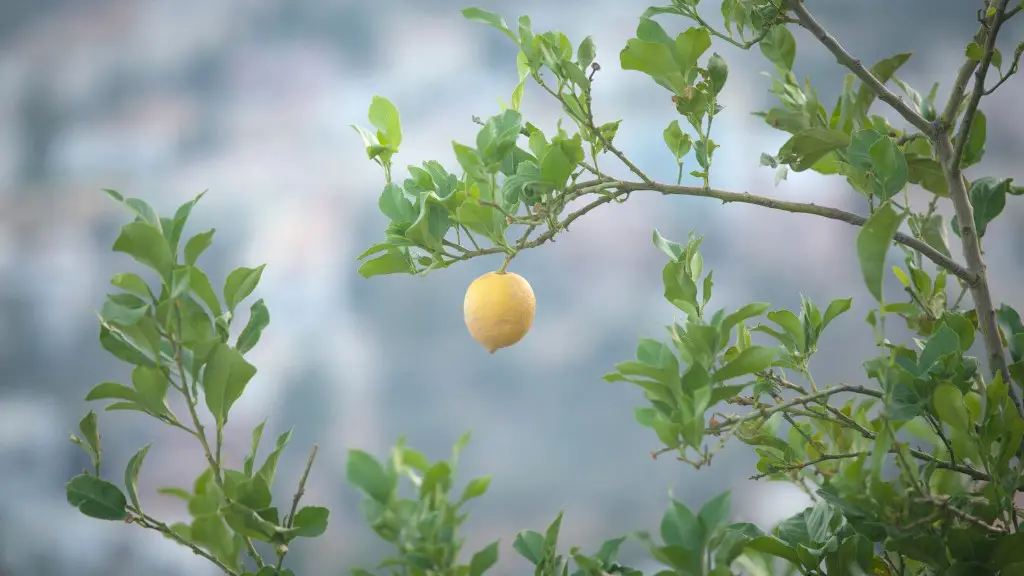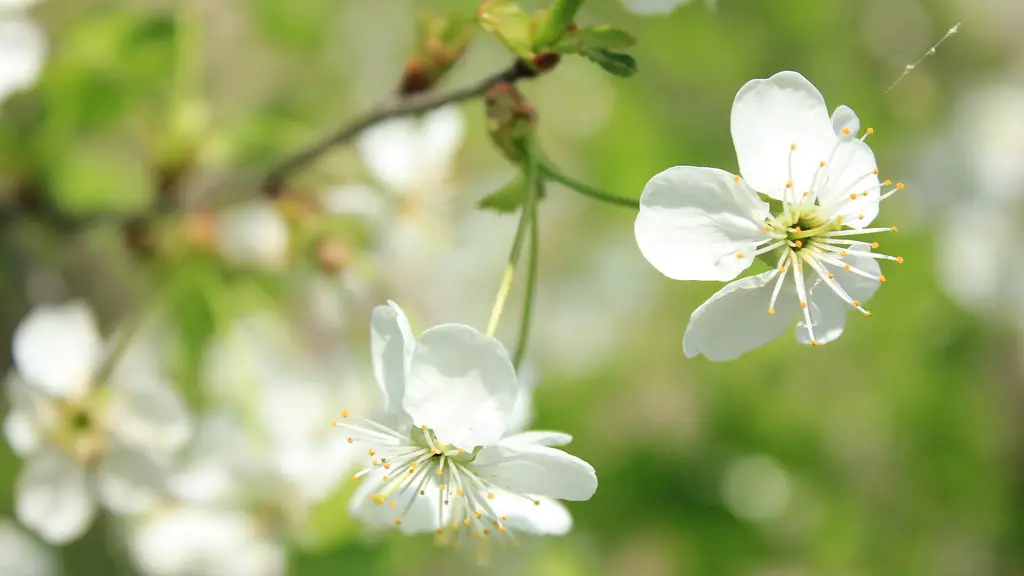1. Choosing the Right Tree
Avocado trees come in a dizzying array of varieties, from the petite Mexican type to the jungle-like ‘Fuerte’. When planning for fruit production, it’s important to select a tree that is well-suited to your planting site, climate and soil. Mexican avocado trees are well-suited to warmer areas, while Fuerte and Caribbean varieties are better suited to cooler climates. Additionally, some varieties require a second tree to ensure ideal pollination.
2. Prepare the Soil
Soil preparation is vitally important when growing avocado trees. The soil should be well-drained and not overly acidic—test the pH to ensure it is between 6.0 and 7.0. Additionally, it’s necessary to add organic matter such as compost to the soil to ensure nutrients are available to the tree.
3. Plant the Tree
When planting an avocado tree, choose a site in full sun and with good air circulation. The tree should be planted so that it is slightly higher than the surrounding soil and the root ball should be covered in its native soil, not amended. If a second avocado tree is required for pollination, select one of a different variety and plant 6-10 feet away.
4. Pruning
Avocado trees should be pruned regularly, typically in spring and summer. Pruning encourages plant health and can help ensure ideal shaping, while also improving air circulation. Removing new, ‘water sprouts’ helps ensure that the tree focuses on producing fruit and not excess foliage.
5. Fertilizing
Fertilizing an avocado tree is also important for good fruit production. For young, newly planted trees, fertilize in spring and fall with an organic nitrogen fertilizer. As the tree matures, scale back fertilization to twice per year with a balanced citrus formula.
6. Mulching
Mulching an avocado tree helps to retain soil moisture, control weeds and moderate soil temperatures. Place a layer of mulch—try fallen leaves, manure or straw—3-4 inches deep around the tree’s perimeter. Be sure to not pile too much on the trunk.
7. Watering
Avocado trees require consistent watering during the growing season. Water in the morning, adding 1cm of water at a time. When drought periods occur, it may be necessary to irrigate the tree, especially if you live in a dry climate.
8. Insect and Pest Control
Avocado trees are vulnerable to a variety of insect pests that can damage the foliage or fruit. To help to prevent infestations, inspect the tree regularly and if the tree is growing in sandy soil, add a soil drench with the biological pesticide, Bacillus thuringiensis, approximately once a month.
9. Keeping Avocado Trees Healthy
Avocado trees are naturally resilient, but keeping them well-maintained is vital for optimal health. Keeping the area free of weeds, watering in the morning, mulching and pruning will help to ensure that the tree produces high yields of healthy fruit.
10. Consult a Professional
For larger trees, consulting a professional can be the best way to ensure the tree’s health. Professionals can inspect the tree and diagnose issues, as well as provide advice on pest control, fertilization, proper planting and more. If you have questions or need professional advice, find a local orchardist or other trained arborist.
11.Avocado Varieties
When selecting the right tree for your planting site, it pays to research a bit. Although all avocados sprout from the same seed, the varieties differ widely. Each of the main types – Mexican, Guatemalan, and Caribbean – grows differently and has different flavors, colors and sizes of fruit, so talk with experienced growers or read books on planting avocados to make an informed decision.
12.Best Practices
It’s important to practice best management techniques when growing an avocado tree. This includes regular pruning, watering and mulching, as well as making sure the pH of the soil is between 6.0 and 7.0. Additionally, removing scale and other pests promptly is important for the best yields.
13.Pollination
Pollination is an important factor when it comes to producing fruit. Avocado trees benefit from having a tree of a different variety planted close by, in order to increase the odds of successful pollination. And, if your tree doesn’t have any luck with pollination, hand-pollination is an option, although it’s not without its own difficulties.
14. Harvesting
Knowing when to harvest avocados can be tricky, as the ripening procedure is a slow and steady process. The two tell-tale signs of a ripe avocado are the color of the skin and the softness of the flesh inside. Additionally, knocking on the fruit may also help with determining if it’s ripe.
15.Tree Management
Avocados need full sun and lots of water and nutrients, so water and fertilize regularly, depending on your climate and soil type. Additionally, avoid too much shade, as it can hamper fruit production. When fruit production appears to slow or cease, a soil test and/or leaf analysis may be necessary to determine if nutrient deficiencies are present.
16.Propagation
If you don’t want to wait to buy a mature avocado tree, growing your own can be an interesting and rewarding experience. Avocados are often propagated through grafting, budding and air layering, but starting from seed is an easy way to get started.
17.Organic Alternatives
For organic food gardeners, an interesting alternative is to grow non-pollinating varieties, such as the dark-skinned, Mexican variety ‘Petite Negra’. These trees will produce fruit in much the same way, but without the need for two different varieties.
18.Conclusion
Growing an avocado tree to produce fruit can be a rewarding experience. It is important to select the right variety, prepare the soil properly, plant the tree correctly, control pests and fertilize and water it regularly. Additionally, consulting a professional arborist can be helpful if you have questions or require more intensive orchard management. With the right knowledge and regular upkeep, your avocado tree should produce a bountiful harvest.



